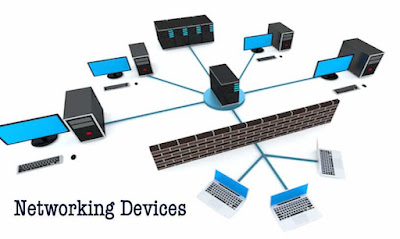WHAT ARE THE DIFFERENT NETWORKING DEVICES?

Network Devices These are the devices that connect the end devices together to allow then to communicate. They can be in the form of switches, hubs, or concentrators, etc. The Hub A hub is a simple device that directs data packets to all devices connected to it. Basically, a hub does nothing except provide a pathway for the electrical signals and regenerate signal before it forwards it to all connected devices. In a hub, a message is passed along or "broadcast" to every one of its ports. It does not matter that the message is only destined for one port. The hub has no way of distinguishing which port a message should be sent to. Passing it along to every port ensures that it will reach its intended destination. This places a lot of traffic on the network and can lead to poor network response times. The Switch Similar to hubs, switches are the connectivity point of a wired network. Devices are connected via twis
